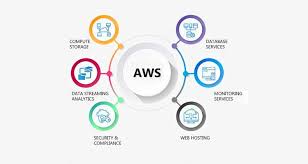Introduction to ServiceNow in Vulnerability Response
ServiceNow Vulnerability Response module is not just a tool—it’s an integral part of an organization’s proactive cybersecurity strategy. In today’s landscape, where new vulnerabilities emerge almost daily, merely identifying potential threats isn’t enough; organizations must swiftly analyze and remediate them before they can be exploited. ServiceNow streamlines this process by integrating vulnerability management with IT service management (ITSM), enabling teams to view vulnerabilities within the larger context of their operational environment. This interconnected approach allows businesses to prioritize remediation efforts based on risk and impact, aligning security initiatives with broader organizational goals.
Moreover, the platform’s automation capabilities play a pivotal role in enhancing efficiency. By automating routine tasks such as ticket generation and status tracking, teams can focus on more strategic responses to critical vulnerabilities instead of getting bogged down in administrative overhead. Integration with other tools amplifies its effectiveness; for instance, coupling Vulnerability Response with asset discovery enables real-time visibility into affected systems. This synergy not only accelerates response times but also fosters collaboration across departments, breaking down silos that often hinder effective threat mitigation. Ultimately, leveraging ServiceNow for Vulnerability Response equips organizations to transform how they approach security—moving from reactive fixes to proactive risk management.
Understanding Vulnerability Response: Goals and Benefits
Understanding vulnerability response within the ServiceNow VR Training framework reveals a myriad of goals that extend beyond mere risk mitigation. Primarily, organizations strive to create a proactive security posture that enables them to anticipate potential threats rather than merely reacting to breaches after they occur. This shift from reactive to proactive ensures that resources are optimally allocated—enabling teams to focus on higher priority vulnerabilities while automating routine tasks through integrations with existing IT workflows.
The benefits of an effective vulnerability response strategy in ServiceNow are multifaceted. Not only does it enhance compliance with industry regulations, but it also fosters a culture of continuous improvement within the organization’s cybersecurity practices. With improved visibility into the organization’s overall risk landscape, stakeholders can make informed decisions and prioritize remediation efforts based on real-time data insights. By harnessing these capabilities, businesses not only bolster their defenses but also cultivate greater trust among clients and partners—ultimately reinforcing their market reputation and standing in an increasingly competitive digital ecosystem.
Key Terminology and Concepts in Vulnerability Management
Understanding key terminology is essential for effective vulnerability management, as it lays the groundwork for cohesive communication within security teams. Terms like “asset inventory” and “risk assessment” are crucial; asset inventory refers to the comprehensive list of hardware and software components in an organization, while risk assessment involves evaluating potential vulnerabilities against their likelihood and impact. This interplay helps prioritize remediation efforts, ensuring that high-risk vulnerabilities receive attention before less critical issues.
Another important concept is remediation, which encompasses both immediate fixes—such as patching known vulnerabilities—and longer-term strategies like implementing security controls or redesigning systems. Organizations must also be familiar with threat intelligence, which involves gathering insights on emerging threats to better inform vulnerability response plans. By integrating threat intelligence into their processes, organizations can stay one step ahead of attackers and make data-driven decisions regarding resource allocation.
Finally, understanding the terminology surrounding vulnerability scoring systems—like CVSS (Common Vulnerability Scoring System)—is vital for standardizing how risks are communicated and understood across different stakeholders. These scores provide a quantifiable means to assess urgency in addressing vulnerabilities, allowing teams to focus on critical areas that could lead to severe consequences if left unresolved. Emphasizing these concepts fosters a culture of proactive security management and streamlines communication during incident responses.
Getting Started with ServiceNow Vulnerability Response
ServiceNow Vulnerability Response streamlines the often chaotic process of identifying, managing, and mitigating security threats. When you first log into the platform, it’s essential to familiarize yourself with its intuitive dashboard, which serves as your command center for all vulnerability-related activities. This interface not only consolidates findings from various sources—ranging from internal assessments to third-party scanners—but also prioritizes vulnerabilities based on potential impact and risk. Emphasizing a risk-based approach means you can allocate resources effectively, focusing not just on the sheer number of vulnerabilities but on those that pose the greatest threat.
To maximize the effectiveness of ServiceNow Vulnerability Response, integrate it with other modules like Incident Management and Change Management. This creates seamless workflows that allow security teams to quickly address vulnerabilities in context, ensuring that remediation efforts do not lead to unanticipated disruptions in business operations. Moreover, harnessing automation capabilities can significantly reduce response times by automatically assigning tasks based on predefined rules—a game-changer when speed is critical in minimizing exposure during a cyber incident. By embracing these integrations and automations right from the start, organizations set a strong foundation for building resilience against evolving threats while enhancing collaboration across departments focused on cybersecurity efforts.
Go ahead in your career with SolarWinds Training !
Conclusion
In conclusion, effectively tackling vulnerabilities in ServiceNow transcends mere identification and remediation; it requires a holistic approach that integrates ongoing monitoring, continuous improvement, and cross-departmental collaboration. As organizations increasingly rely on digital infrastructure, the need for robust vulnerability management systems becomes paramount. By leveraging automation features within ServiceNow, teams can streamline their processes to not only respond to threats more rapidly but also to anticipate future risks through predictive analytics.
Moreover, fostering a culture of shared responsibility is essential. Stakeholders from IT, security, and even executive management must engage actively in vulnerability response strategies. When everyone understands their role in safeguarding organizational assets, the collective resilience against cyber threats significantly strengthens. Embracing these practices allows businesses not only to respond effectively but also to innovate confidently as they navigate an ever-evolving threat landscape—transforming vulnerability response from a reactive chore into a strategic advantage.







